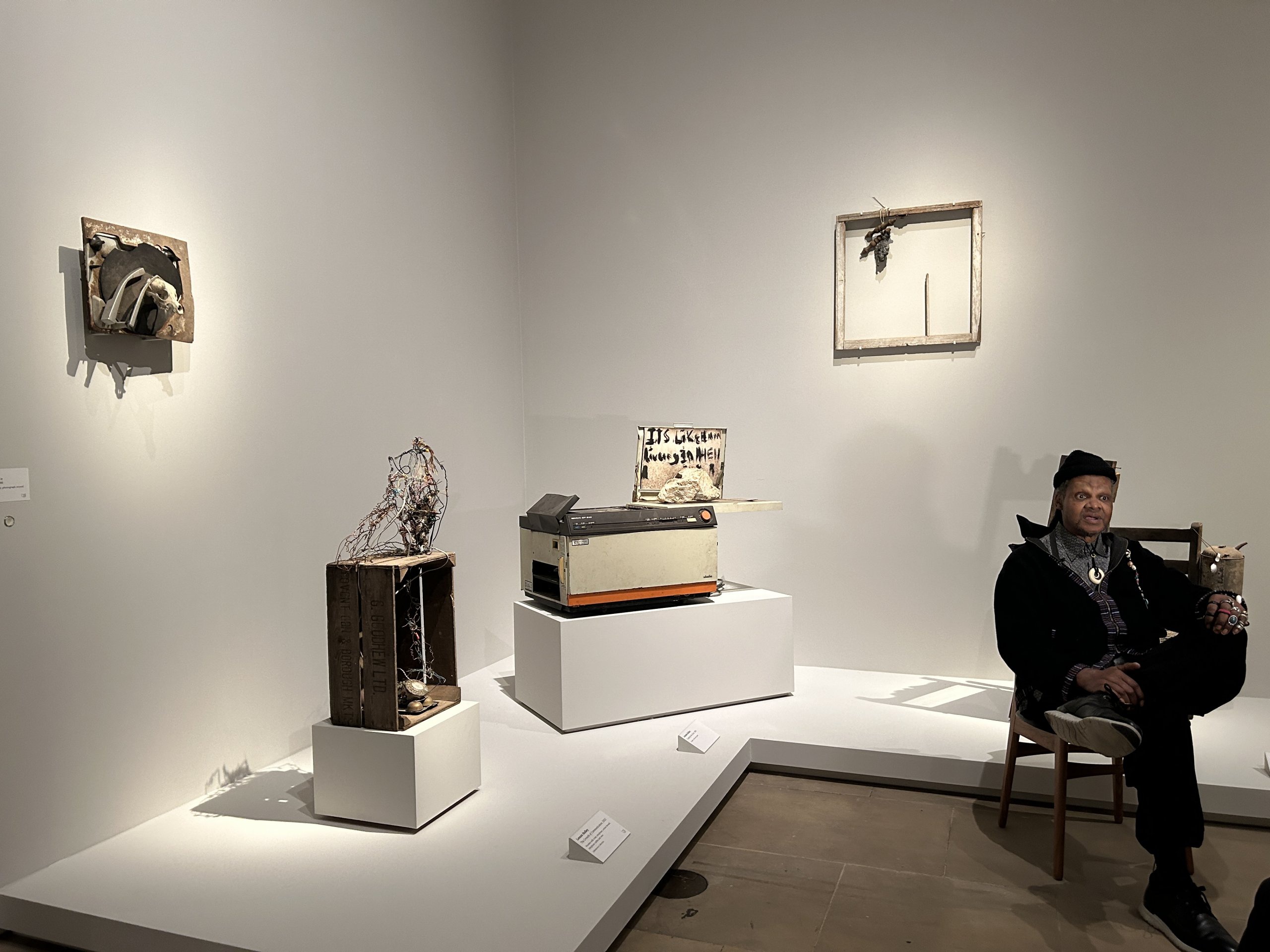14 March 2023 This moving show considers the wealth of inventive and work by African American artists from communities that remained in southern states after the civil war.
Narratives of the great migration and the Harlem renaissance have dominated conversations around African American art in the 20th century, but a new exhibition, Souls Grown Deep Like the Rivers, which opens at the Royal Academy in London this week, invites us to consider the cultural contribution of artists from the American south. Communities that remained there in the aftermath of the civil war continued to be exposed to extremes of racial violence, segregation and the hardship of economic exclusion.
The psychic scars of that collective trauma run deep through many of the works in the show. Alabama native Thornton Dial’s Blue Skies: The Birds That Didn’t Learn How to Fly, for example, where cloth rags hang limp from a rubber-coated copper wire, paints a picture of abjection, while Mary T Smith’s We All Want a Jobe, created in the early 1980s during her retirement in Hazlehurst, Mississippi, positions a line of blurred faces beside the desperate, scrawled text of the title to create a tableau haunted by otherness. In Keeping a Record of It (Harmful Music), Lonnie Holley, also a native of Birmingham, Alabama, positions an animal skull in the centre of a salvaged record player, gripped as though by a pincer in the record player’s arm while Ronald Lockett’s Oklahoma, made in 1995 in response to the Oklahoma City bombing, pieces together sheets of metal, tin, wire and nails on wood to conjure the horror of murderous white supremacy.

Lonnie Holley at Souls Grown Deep like the Rivers: Black Artists from the American South, Royal Academy, London, UK, 2023.
At times the exhibition feels overwhelmingly bleak. And yet in the material inventiveness of the works and in the sense of meaning made in community, with what materials are available, a powerful counterpoint to suffering emerges. It speaks to resilience, innovation and a propensity for survival that, through these artists, continues to exert an influence on prominent African American artists including Theaster Gates and Leonardo Drew (whose new work Number 360 opens at the Yorkshire Sculpture Park chapel this week) who have also made use of waste materials to propose an art of reclamation.
Dial’s Stars of Everything, for example, transforms old cans into a cosmic night sky and a spray paint can and a piece of old carpet into an almost human presence that dances in the centre of this assemblage. His Tree of Life pulls together fragments of found wood, roots, rubber tyres and air freshener to create a monument to being that also reflects his 30 years’ experience as a steelworker in Bessemer, Alabama, where his sons, Thornton Jr and Richard (both artists in the exhibition too) also worked.
The theme of intergenerational conversation and a creative tradition sustained through adversity underpins the exhibition and is also evident in the display of quilts (intended as objects to help people keep warm economically) that were made through the course of the 20th century in Gee’s Bend, on the banks of the Alabama River, by artists including Rachel Carey George, Martha Jane Pettway and Loretta Pettway. “I came to realise,” Loretta Pettway has written, “that my mother, her mother, my aunts, and all the others from Gee’s Bend had sewn the foundations, and all I had to do now was thread my own needle and piece a quilt together.”
In the early 1980s, when the boxcar factory that was employing Dial and his sons shut down, they went on to set up a metal patio furniture business together where they would, on the side, experiment with making sculptures from scrap metal. Jesse Aaron, working as a cabinet maker in Lake City, Florida turned his skills in woodworking to the task of carving faces on trees around his property to act as protective presences. Joe Minter’s And He Hung His Head and Died draws on the artist’s experience as a welder in the construction industry, also in Birmingham, Alabama, to evoke “the 400 years journey of Africans in America” – a theme that also runs through the immersive environment, African Village in America, that he has installed behind his house to preserve the tradition of the yard show – artists, for want of any kind of institutional support, would exhibit works at their properties.
There’s a giddying contrast in seeing these works now on display, when so many of the artists included in the exhibition are already dead, in the vaulted galleries of the Royal Academy where so much of the wealth and cultural capital amassed through the era of the plantation has been preserved. Placed here, this show speaks, above all, to the cultural life that has prevailed in communities shaped by histories of African exploitation and enslavement on the other side of the Atlantic Ocean, and that contrast, though uneasy, feels generative, too, and perhaps the first intimation of a longer process of reparation that is to come.

